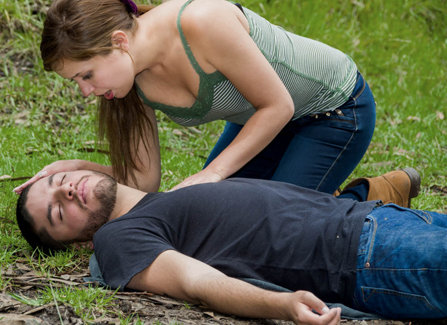Three Ways to Save an Addicted Person’s Life

When someone is addicted to drugs or alcohol, his (or her) family is all-too aware of the dangers. The addicted individual may be oblivious to the possibility of overdose or injury while impaired, but the family lives in fear of a phone call or knock at the door that brings the news that their loved one has died.
An addicted person may need to be rescued at any time. After all, the only way to get that person to a rehabilitation program is if they can be brought back from an overdose of drugs or alcohol.
There are three ways that an addicted person’s life can be saved and they are important to know.
1. If you see signs of an overdose, instantly call 911 or the appropriate emergency service number in your area.
Of course, when a person overdoses, his companions may hesitate to call 911 out of a fear of being arrested. Most states have passed laws providing greater or lesser degrees of immunity for a person in this situation. These are called Good Samaritan laws. As of this writing, these states are:
Alaska, Alabama, Arkansas, California, Colorado, Connecticut, Delaware, Florida, Georgia, Illinois, Indiana, Kentucky, Louisiana, Maryland, Massachusetts, Michigan, Minnesota, Mississippi, Nevada, New Hampshire, New Jersey, New Mexico, New York, North Carolina, North Dakota, Ohio, Oregon, Pennsylvania, Rhode Island, Tennessee, Utah, Vermont, Virginia, Washington, West Virginia, and Wisconsin.
The extent of the law varies by state, but in general, this type of law usually protects a person who is trying to help someone who has been injured or is overdosing. With protection from a Good Samaritan law, the priority can be on saving the life of the drug user rather than protecting oneself from arrest.
Briefly, here are some of the general signs of overdose:
Problems with vital signs like temperature, breathing or pulse rate or blood pressure; sleepiness, unconsciousness or coma; cool and sweaty skin or hot and dry skin; chest pain, shallow breathing or shortness of breath; abdominal pain, vomiting or diarrhea.
Signs specific to opioids like heroin or painkillers: Vomiting, snoring loudly, gurgling noises. Slowed breathing or heartbeat. Pale and clammy.
Signs specific to alcohol: Confusion, unconsciousness, can’t be roused, slow breathing, bluish skin, irregular breathing, seizures.
2. If someone you care about is misusing prescription opioids or using heroin, keep the overdose reversal drug naloxone on hand and use it in the event of an overdose.
Until recently, only medical professionals could possess or administer this drug. Now, nearly every state has expanded access to naloxone. New state laws have enabled doctors to prescribe this drug to the family members of addicted people or to those who simply want to be able to save a life if needed. In some states, it is possible to buy this product over the counter.
The National Conference of State Legislatures has more information available on both Good Samaritan laws and access to Naloxone. Also, check with your state’s Department of Health or Board of Pharmacy for specifics on the laws in your state. In Minnesota, for example, a person who is not a healthcare professional is allowed to possess and use naloxone as long as he is acting in good faith. The Minnesota law further states that this person is immune from criminal prosecution for the act of using it.
3. Help your loved one start on the road to recovery at a rehabilitation program that emphasizes relapse prevention.

The Narconon rehabilitation program has helped tens of thousands of people recover their sobriety since it first began in 1966. The early steps of this program help each person regain a brightness and freshness of outlook, and a greater ability to think clearly. For many people, by the time they finish these steps, their cravings for more drugs or drink are greatly reduced or even gone. Now, it’s time for them to learn how to prevent relapses.
They start by learning how they got into this mess in the first place. They learn about troublesome associates who might have led them astray and how to identify them and avoid similar problems in the future. Then they learn how to recover the personal integrity they lost as drugs took over their lives. Finally, they learn the problem-solving tools they’ll need to overcome challenges in life. These new tools will help keep them on a sober path in the future, despite obstacles or setbacks.
Learn more about how the Narconon Ojai addiction recovery program can mean a new, productive and enjoyable life for someone you care about—or for you. Call us today at 1-866- 292-4503.
REFERENCE LINKS
http://www.webmd.com/mental-health/addiction/drug-overdose#2


